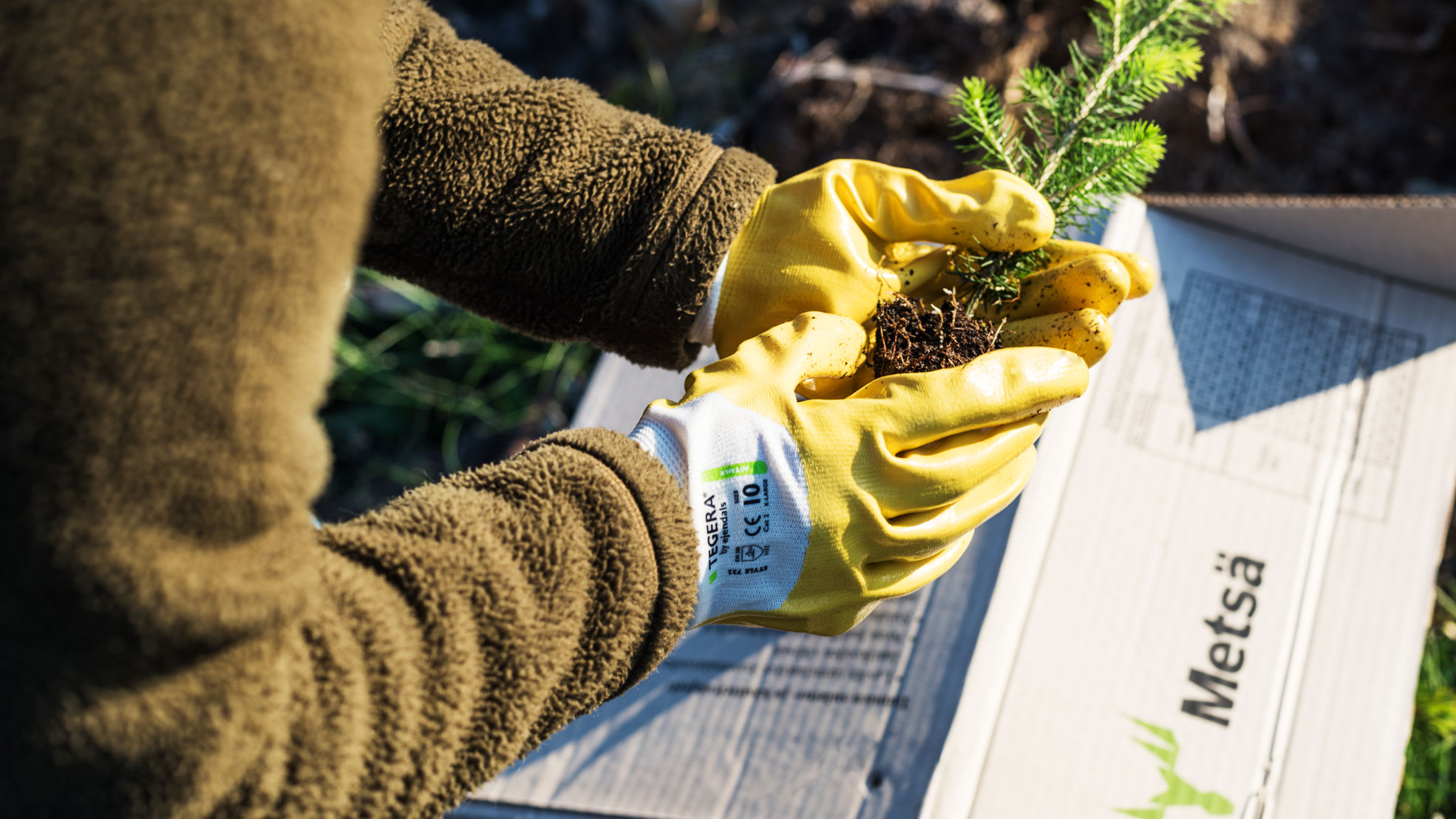The cooperation between Metsä Group’s specialists and a forest owner starts from the forest owner’s goals.
According Metsä Group’s Forest Specialist Pekka Seppälä, forest owners who live in urban environments are particularly interested in outsourcing forest management either partly or entirely to professionals.
Finland has more than 600,000 forest owners and roughly a third of them reside in a different locality from their forest.
“The owners may, for example, instruct us to emphasise the value of nature in their forests’ management decisions. This is more common than an owner who seeks only to maximise profits from their forest,” says Seppälä.
Metsä Group also provides specialist services for forest owners interested in the voluntary protection of forests.
The traceability of wood and planting of seedlings
All of the wood raw material that Metsä Group purchases comes from sustainably managed northern forests. The origin of the wood is followed throughout the value chain, all the way up to the end product. This way, the wood’s traceability can be ensured at all stages of the chain. Forests are managed continuously according to the principles of sustainable forest management.
Ensuring continuity is important for both forest owners and forestry. In Finland, the Forest Act – which requires a forest to be replanted with a new seedling stand after a regeneration felling – ensures that there is enough wood for future generations.
Metsä Group delivers more than 30 million seedlings a year to be planted in Finnish forests. The planting and sowing rely on domestic tree species. This ensures that the living conditions of the natural forest-dwelling species are retained. The most common tree species are spruce, pine and silver birch.
Each felled tree is replaced with four to five new seedlings. When managed well, a new stand will grow into sturdy logs in 60–80 years’ time.
Retention trees introduce biodiversity into the forest
Forestry Services Manager Teppo Oijala reminds us that forests are managed not only for people’s own livelihood, or that of future generations, but to mitigate climate change. Wood is a renewable resource, and the products made from it serve as responsible alternatives to products made from non-renewable resources. Sustainably managed, robust forests store carbon dioxide from the air and function as carbon sinks.
The forest’s biodiversity is ensured by leaving retention trees in the middle of a felling area, for instance. The best groups of retention trees consist of a variety of tree species of varying ages, some of which will begin decaying over time. This is vitally important for many organisms.
In addition, the retention trees provide the forest with trees of different ages, which is also important for many organisms. Retention trees are also a requirement for both PEFC and FSC certification. Nearly 90 per cent of the wood purchased by Metsä Group is certified.
While trees that decay where they stand are a haven for birds which nest in holes, they are also used as look-out posts by birds of prey.
“This is why we make high stumps in the majority of felling sites. We cut a trunk at a height of 2–4 metres and leave it in the forest, with the landowner’s consent, of course,” says Oijala.
Inverting is a soil preparation method developed by Metsä Group, in which the soil is broken as little as possible from the spot in which a seedling is planted. The soil is prepared so that the planted seedlings will have as good and warm growing conditions as possible.
When the seedlings grow fast, they won’t give up space to grasses. The scarcity of grass, on the other hand, wards off pests and voles.
Thinning is important
Forest thinning involves the removal of trees that have lagged behind in growth and leaves the best trees in the forest to grow and become sturdy. For a forest owner, thinning generates income.
A successful thinning accelerates the growth of the trees, since it improves the growth conditions of the remaining trees. The cycle of nutrients also accelerates.
A well-managed commercial forest does not look that different from a forest in its natural state. Although most of the trees are pine or spruce, a commercial forest can also include broad-leaved trees, such as birch, rowan and juniper.
A mixed forest has a lot of advantages.
“Growing a mixed forest with enough broad-leaved trees alongside coniferous ones is a superb way to improve the soil. A forest with multiple tree species is also more resistant to pests than a forest with only a single tree species. In forest management, we aim for mixed forests whenever it suits the location,” says Oijala.
Sustainable forest management is rewarding when you see the results and benefit from them, too.
